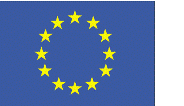|
European Union
|

|
Capital: Brussels (Belgium)
Population: 513,500,000
Brief History of European Union:
The foundations for the European Union were laid at the Hague Congress in 1948. After World War II, the European nations formed alliances to work on the stability and economic cooperation between the countries of Europe. Several more meetings and treaties over the years continued to build a stronger bond between the European nations. These treaties included the Treaty of Paris, the Treaty of Rome, the Maastricht Treaty, and the Treaty of Lisbon. It was the Maastricht Treaty in 1993 that formally established the European Union as we know it today. There are currently (2012) 27 member countries and growing.
The European Union has three major bodies that govern its members with rules and guidelines. They include the Council, the European Parliament, and the European Commission. The Euro was introduced in 2002 as the common currency used by EU members. It is widely accepted in most European countries and even in some non-EU countries.
The EU allows member nations free trade and commerce between each other. Also, it?s easy for citizens to travel between EU member countries. This helps businesses and tourism throughout the Union. It is often referred to by the abbreviation EU.
The Geography of European Union
Total Size: 3,976,372 square km
Size Comparison: less than one-half the size of the US
Geographical Coordinates:
World Region or Continent: Europe
General Terrain: fairly flat along the Baltic and Atlantic coast; mountainous in the central and southern areas
Geographical Low Point: Lammefjord, Denmark -7 m; Zuidplaspolder, Netherlands -7 m
Geographical High Point: Mont Blanc 4,807 m; note - situated on the border between France and Italy
Climate: cold temperate; potentially subarctic in the north to temperate; mild wet winters; hot dry summers in the south
Major cities:
The People of European Union
Type of Government:
Languages Spoken: Czech, Danish, Dutch, English, Estonian, Finnish, French, German, Greek, Hungarian, Italian, Latvian, Lithuanian, Maltese, Polish, Portuguese, Slovak, Slovene, Spanish, Swedish; note - only official languages are listed; Irish (Gaelic) will become the 21st language on 1 January 2007
Independence: 7 February 1992 (Maastricht Treaty signed establishing the EU); 1 November 1993 (Maastricht Treaty entered into force)
National Holiday: Europe Day 9 May (1950); note - a Union-wide holiday, the day that Robert SCHUMAN proposed the creation of an organized Europe
Nationality:
Religions: Roman Catholic, Protestant, Orthodox, Muslim, Jewish
National Symbol: a circle of 12 stars
National Anthem or Song: Ode to Joy
Economy of European Union
Major Industries: among the world's largest and most technologically advanced, the European Union industrial base includes: ferrous and non-ferrous metal production and processing, metal products, petroleum, coal, cement, chemicals, pharmaceuticals, aerospace, rail transportation equipment, passenger and commercial vehicles, construction equipment, industrial equipment, shipbuilding, electrical power equipment, machine tools and automated manufacturing systems, electronics and telecommunications equipment, fishing, food and beverage processing, furniture, paper, textiles, tourism
Agricultural Products: wheat, barley, oilseeds, sugar beets, wine, grapes; dairy products, cattle, sheep, pigs, poultry; fish
Natural Resources: iron ore, arable land, natural gas, petroleum, coal, copper, lead, zinc, hydropower, uranium, potash, fish
Major Exports: machinery, motor vehicles, aircraft, plastics, pharmaceuticals and other chemicals, fuels, iron and steel, nonferrous metals, wood pulp and paper products, textiles, meat, dairy products, fish, alcoholic beverages.
Major Imports: machinery, vehicles, aircraft, plastics, crude oil, chemicals, textiles, metals, foodstuffs, clothing
Currency: euro, British pound, Cypriot pound, Czech koruna, Danish krone, Estonian kroon, Hungarian forint, La
National GDP: $15,480,000,000,000
** Source for population (2012 est.) and GDP (2011 est.) is CIA World Factbook.
Back to Geography Home Page
